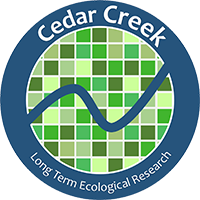The purpose of this experiment is to further elucidate the mechanisms by which nitrogen (both externally supplied and substrate nitrogen) influence decomposition. The same manipulations are established at three sites: an oak stand (dominated by Quercus ellipsoidalis) and two pine stands (dominated by Pinus strobus) that were part of a previous study on N effects on the early stages of decomposition (Hobbie 2005, 2008). At each site, the manipulations consist of the following treatments (each applied to 5 replicate 1.5 m x 1.5 m plots): control (no amendments except distilled water), IN (inorganic N added as aqueous NH4NO3 at a rate of 10 g N m-2 y-1), ON (organic N added as an aqueous cocktail of equal parts alanine, glycine, glutamate to total 10 g N m-2 y-1), IN+C (inorganic N added as aqueous NH4NO3 at a rate of 10 g N m-2 y-1 plus glucose at a rate equal to amount of C added in the ON treatment), C alone (glucose), Non-N Nutrients (a mixture of nutrients minus N, including P, K, Ca, Mg, and trace metals), and Long-Term N (established plots at the same sites that have been fertilized with 10 g N m-2 y-1 as NH4NO3 since 1999). These treatments are applied in three applications over the growing season and allow comparison of the effects of inorganic versus organic N on decomposition, controlling for the labile C that is added when organic N is used as a fertilizer. In each plot, four substrates have been decomposed for 5 years. These substrates were chosen for their broad range of initial N concentrations and included green leaves and litter of Quercus ellipsoidalis.
Modern agriculture and fossil fuel combustion contribute to the transfer of N from largely inert pools (atmospheric N2, fossil fuel reserves) to biologically reactive forms that can be transported downwind from agricultural or industrial areas to ecosystems that historically may have experienced low levels of N inputs. Understanding how increased N inputs alter the cycling of another biologically important element, C, has been impeded by uncertainties about N effects on the process of decomposition. To date, ecologists remain unable to predict when, where, and in what forms N addition stimulates rates of decomposition. For example, recent work showed that in eight low-N sites in Central Minnesota, litter N was positively correlated with decomposition, suggesting N limitation of decomposition, yet addition of inorganic N fertilizer increased decomposition in only two of eight sites. These paradoxical results call into question the assumption that the often-observed correlation between substrate N concentration and decomposition arises because N limits decomposition. Research is addressing three interrelated questions:* (1) Why do litter N and externally supplied N have contrasting effects on decomposition in low-N ecosystems? (2) Do different forms of N (organic vs. inorganic; substrate vs. externally supplied) affect the activity, function and composition of the decomposer community differently, and, if so, what are the consequences for decomposition? (3) What are temporal dynamics of the activity, function, and composition of the decomposer community and do these dynamics depend upon the amount and forms of N supplied to the decomposer community?* These questions will be addressed using a 4-y decomposition experiment manipulating the quantity and form of N available to decomposers via use of substrates ranging in N concentrations and of inorganic (ammonium nitrate) and organic (amino acids) N fertilizers. The response of microbial biomass, stoichiometry, efficiency, function (decomposition rate, enzyme activity) and community structure (assessed using phospholipids fatty acid analysis) are being compared among treatments. The proposed research will increase understanding of how atmospheric N deposition alters C cycling in ecosystems.
This research is additionally supported by an NSF CAREER award to Sarah E. Hobbie (DEB-0347103). Any opinions, findings, conclusions, or recommendations expressed in the material are those of the author(s) and do not necessarily reflect the views of the National Science Foundation.
